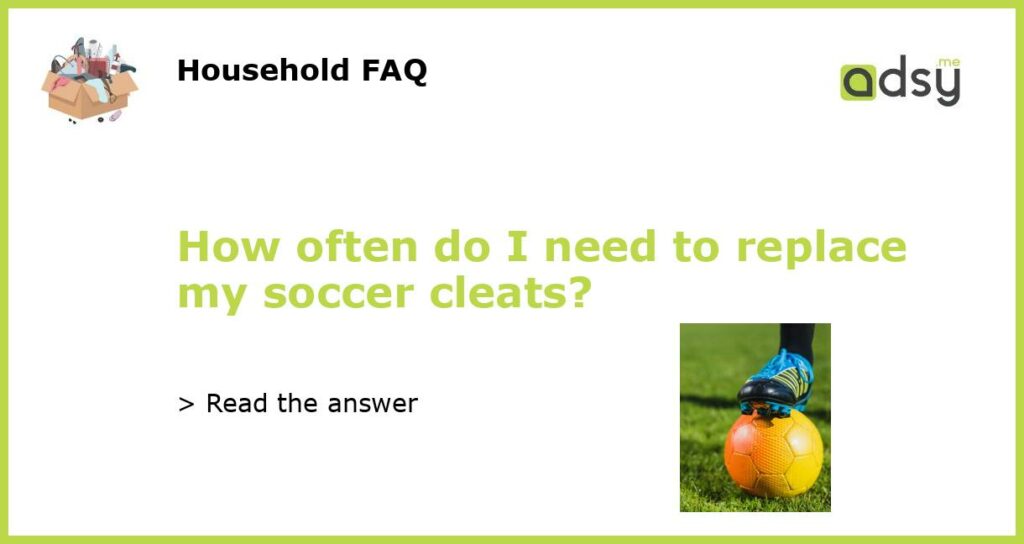How important is it to replace soccer cleats?
Soccer cleats are an essential part of any soccer player’s equipment. They provide traction, stability, and support, which are crucial for playing the game. However, like any other piece of equipment, soccer cleats wear out over time and need to be replaced. The question is, how often do you need to replace them?
What are the signs that your soccer cleats need to be replaced?
The first and most obvious sign that your soccer cleats need to be replaced is when the sole starts to wear out. If you can see the studs or the pattern on the sole has become smooth, it’s time to consider a new pair.
Another sign is when the upper part of the cleat has become too loose, torn, or ripped. A loose upper can impact your control, stability, and overall performance, so it’s better to invest in a new pair instead of continuing to use them.
How often should you replace soccer cleats?
The lifespan of soccer cleats differs from player to player as it depends on the frequency of usage and playing conditions. On average, a pair of cleats should last between 6 months to a year. But, if you are an elite player who plays for hours every week, the cleats’ lifespan can be shortened to approximately 3-4 months.
It’s important to note that quality soccer cleats tend to last longer than cheaper ones. So investing in a good quality pair can save you money in the long run.
What are the benefits of replacing soccer cleats on time?
The benefits of replacing soccer cleats on time are numerous. Firstly, you can prevent injuries by wearing cleats that provide good traction on the pitch. Secondly, good quality cleats can improve your performance by providing better support and stability, leading to better ball control, acceleration and agility. Finally, having a fresh new pair of cleats can lift your spirits and boost your confidence, which can have a positive impact on your overall performance.
How to make soccer cleats last longer?
There are some simple steps you can take to increase the lifespan of your soccer cleats. Firstly, avoid using them on hard surfaces like concrete or asphalt, as it can damage the studs and sole. Secondly, make sure to clean them after each game or training session to remove any dirt, mud or moisture as it can cause damage and bad odors. Finally, store them properly by keeping them dry and away from extreme temperature conditions.
By following these steps, you can ensure that your soccer cleats last longer, providing you with the best performance and value for your money.






